Students are enjoying their summer vacation. We hope they are playing with friends and running around outdoors and finding time to read and explore new interests. While students are out, DHM Research reached out to Oregonians to ask them a few questions about schools, including about performance, support for funding, and whether to restrict students’ access to phones.
School enrollment is declining in some of Oregon’s largest school districts. This is largely due to declining birth rates. The survey also asked whether declining birth rates are a problem and whether Oregon should do more to encourage people to have children.
Oregonians give low marks to public schools in their communities and across the state.
Asked to give a letter grade to their local public schools, 59% of Oregonians rate them a C or lower. 24% give them a B, and just 6% give them an A. Excluding “don’t know” responses, this is the equivalent to a 2.0 GPA.
Those with children in their households are only slightly more positive, with 30% giving their local public schools a B and 8% an A, with a GPA of 2.1.
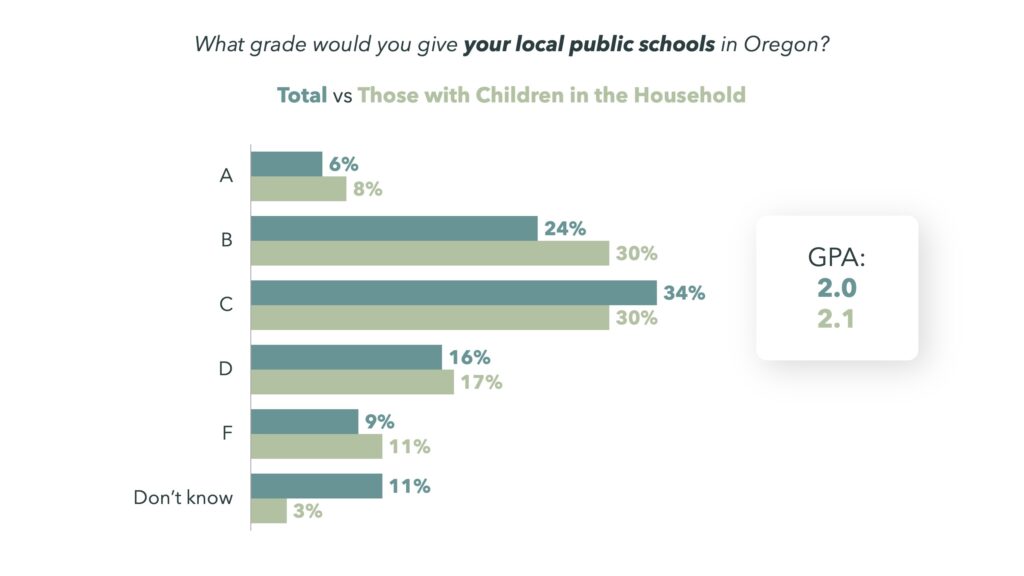
When considering the state’s public schools generally, Oregonians are even more negative. 67% give Oregon’s public schools a grade of C or lower, while 18% give them a B, and 3% give them an A. This is a GPA of just 1.8.
Most Oregonians believe that public schools are underfunded.
The survey asked Oregonians to consider two statements. One said public schools do not have a funding problem and they can meet the needs of students if they spend their money efficiently. The contrasting statement said that public schools do have a funding problem and there is simply not enough money to meet student needs.
Presented this way, 55% of Oregonians agree that public schools have a funding problem. This is the majority position in all areas of the state and among those both with and without children in the household.
There is a difference by partisanship, though. 60% of Democrats and 61% of non-affiliated and third-party voters feel that schools do not have adequate funding, while 54% of Republicans say that schools do have the funding they need.
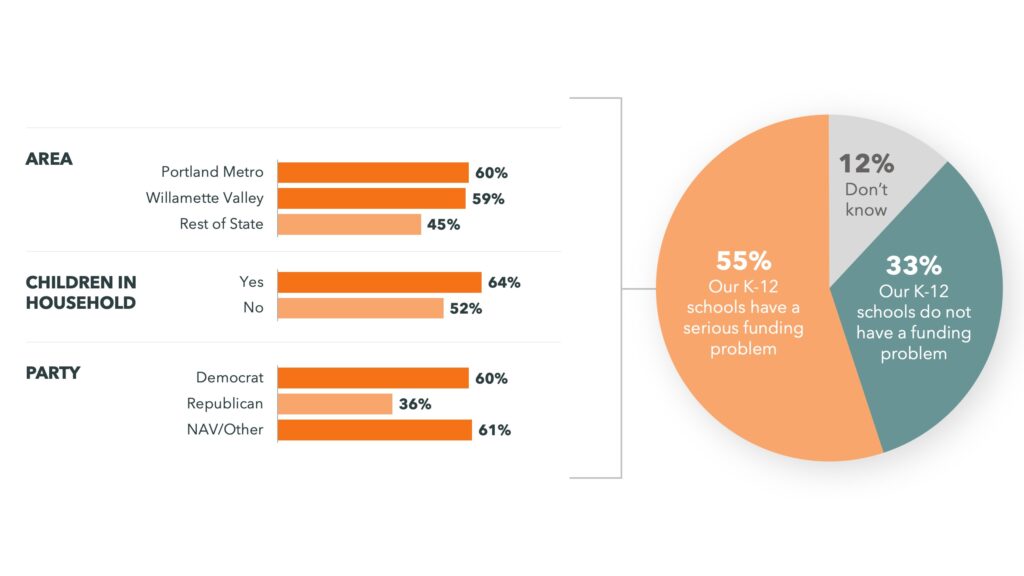
More Oregonians believe that schools are underfunded now than five years ago, when DHM last asked this question. In 2019, 47% of Oregonians said schools did not have enough funding—8 points less than now.
Oregonians support limiting student access to smartphones while they are at school.
More and more school districts are restricting students’ access to smartphones, and Governor Kotek is considering a statewide phone policy.
DHM asked Oregonians their opinions about smartphones in middle schools and high schools. Most support limits, with more restrictions for younger students in middle schools.
For high schools, 53% support either prohibiting smartphone use in schools (22%), requiring them to be turned off (19%), or not allowing them in school at all (12%).
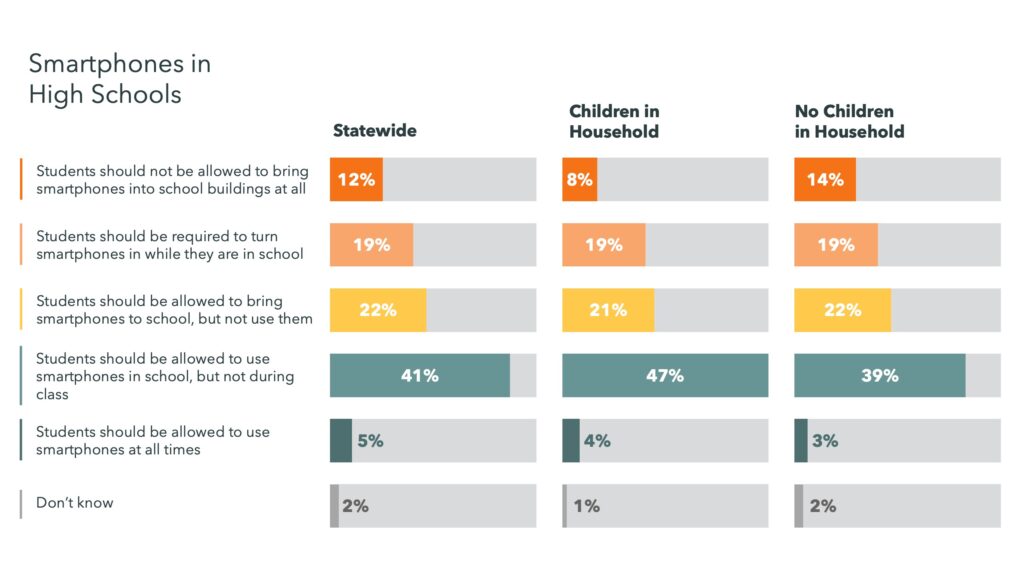
For middle schools, 66% support either prohibiting smartphone use in schools (24%), requiring them to be turned off (25%), or not allowing them in school at all (17%).
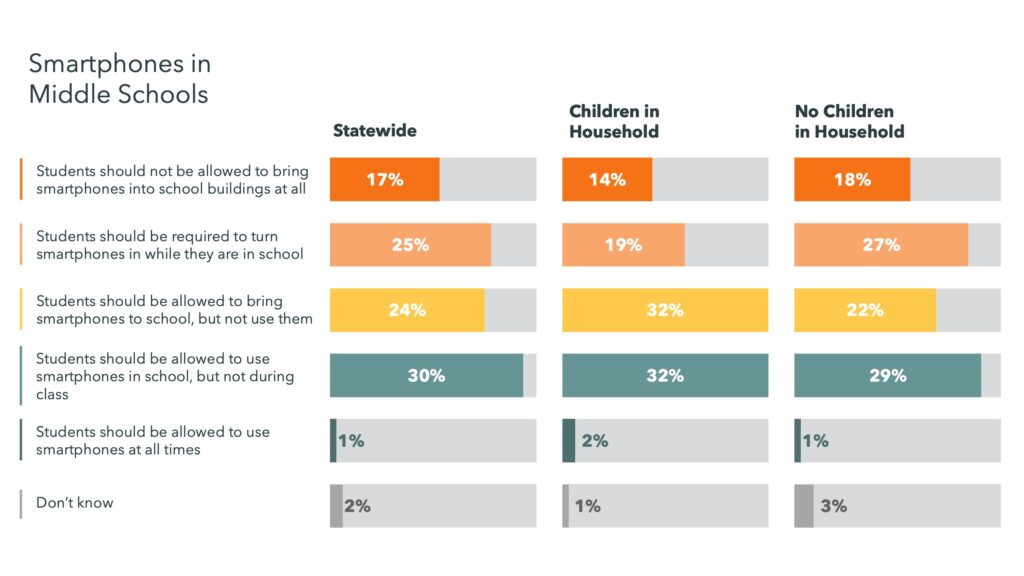
Oregonians with children in the household have slightly more accommodating attitudes. For example, 47% of those with children say that high school students should be allowed to use smartphones in school (but not during class) compared to 39% of those without children.
Oregonians don’t seem concerned about declining birthrates and oppose the state doing more to encourage people to have more children.
Oregon’s birth rate is declining and is one of the lowest in the nation. Consequently, school enrollments are also falling.
We asked Oregonians whether declining birth rates are good or bad. 32% said they are good, 41% said they are neither good nor bad, and just 21% said they are bad. Republicans are the most likely to say falling birth rates are bad, but even so, only 32% feel this way.
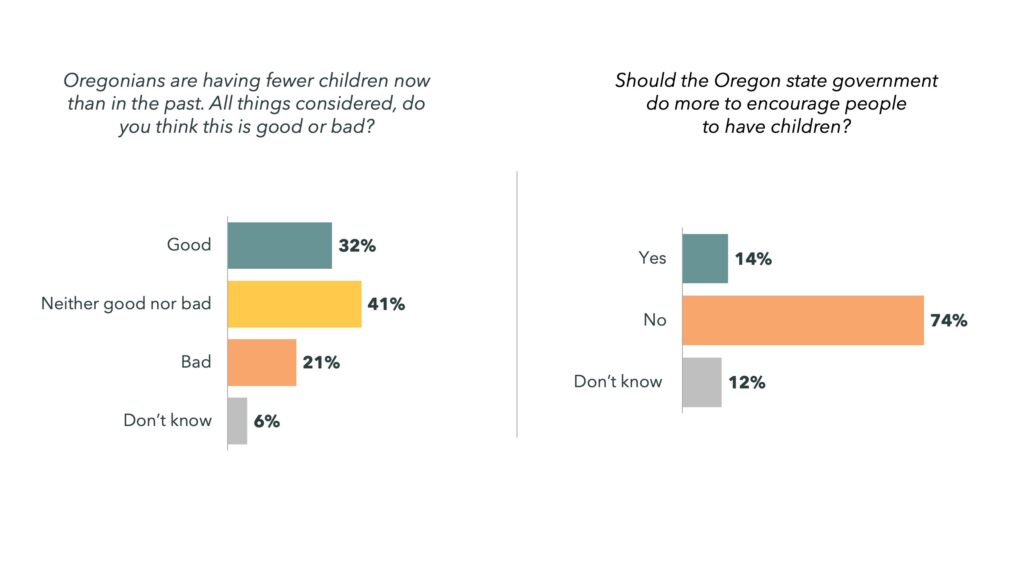
Since Oregonians are unconcerned about falling birth rates, it’s not surprising they are largely uninterested in having the state do more to encourage people to have children. Only 14% of Oregonians support the state doing more to encourage people to have children, including 17-22% of those under age 45.
